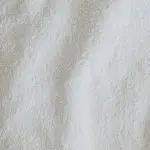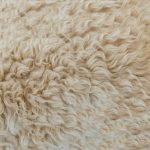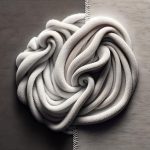Are you curious about cotton French terry fabric? Well, look no further! In this article, we’ll explore the history, characteristics, production process, uses, and care of this versatile fabric.
Whether you’re a fashion enthusiast or simply want to learn more about textiles, this informative piece will provide you with all the essential information you need.
So, sit back, relax, and let’s dive into the fascinating world of cotton French terry fabric!
Table of Contents
History of Cotton French Terry Fabric
To understand the history of cotton French terry fabric, you gotta go back to its origins in 19th century France. It all began in the small town of Roubaix, where a group of textile manufacturers developed a new type of fabric using cotton yarns. They created a looped pile fabric, which was soft, absorbent, and had a unique texture. This fabric quickly gained popularity and became known as French terry.
The origins of cotton French terry fabric hold cultural significance as it was widely used in the textile industry and played a crucial role in the development of the French textile manufacturing sector. The fabric was initially used for towels and bathrobes due to its absorbency and comfort. However, its versatility soon led to its use in various other garments, including sweatshirts, hoodies, and loungewear.
Over time, cotton French terry fabric spread beyond France and became a staple in the global fashion industry. Its softness, breathability, and ability to provide warmth made it a popular choice for casual and activewear. Today, cotton French terry fabric continues to be widely used and appreciated for its comfort, durability, and stylish appeal. Its origins in 19th century France laid the foundation for its cultural significance and enduring popularity in the world of fashion.
Characteristics of Cotton French Terry Fabric
French Terry fabric has excellent absorbency, making it a popular choice for activewear and towels.
It is soft to the touch, providing a comfortable and cozy feel against your skin.
Additionally, French Terry is known for its durability, ensuring that your garments will last through many wear and wash cycles.
Absorbency of French Terry
The absorbency of French Terry fabric can be affected by factors such as the type of cotton used and the thickness of the fabric.
When it comes to moisture wicking properties, French Terry fabric is known for its ability to absorb and draw moisture away from the body, keeping you dry and comfortable.
The fabric’s looped construction allows for enhanced breathability, allowing air to circulate and prevent overheating.
Additionally, French Terry fabric provides a soft and cozy feel against the skin, adding to its comfort factor.
Whether you’re wearing it for athletic activities or lounging at home, French Terry fabric offers the perfect combination of moisture management, comfort, and breathability.
Softness and Durability
When it comes to softness and durability, the type of cotton and fabric thickness play a significant role.
Cotton French terry fabric is known for its exceptional softness, making it incredibly comfortable to wear. The looped construction of the fabric creates a plush texture that feels gentle against your skin.
Additionally, the fabric’s breathability allows air to circulate, keeping you cool and preventing overheating. This makes cotton French terry ideal for various activities and climates.
Moreover, the fabric’s durability ensures that it can withstand frequent washing and everyday wear without losing its softness or shape. Its versatility and style make it suitable for a wide range of clothing items, from cozy loungewear to fashionable outerwear.
Whether you’re looking for comfort or fashion, cotton French terry fabric delivers on both fronts.
Production Process of Cotton French Terry Fabric
When it comes to producing high-quality cotton French terry fabric, yarn selection and treatment play a crucial role.
You need to carefully choose the right type of yarn that will provide the desired texture and durability for the fabric.
Additionally, proper treatment of the yarn, such as pre-shrinking or mercerizing, can enhance its performance and aesthetics.
Lastly, looping and finishing techniques also contribute to the overall quality of the fabric, determining its softness, thickness, and appearance.
Yarn Selection and Treatment
Yarn selection and treatment greatly impact the quality of cotton French terry fabric. To ensure the highest quality, attention must be given to sourcing the right yarn and treating it properly. Here are four key considerations:
-
Yarn sourcing: The quality of the cotton used in the yarn directly affects the final fabric. It is important to select high-grade cotton with long fibers, as this contributes to the fabric’s durability and softness.
-
Yarn count: The thickness of the yarn, measured in yarn count, affects the weight and texture of the fabric. A finer yarn count produces a lighter and softer fabric, while a thicker count results in a heavier and more durable fabric.
-
Yarn twist: The way the yarn is twisted affects the fabric’s strength and appearance. A tighter twist creates a stronger fabric, while a looser twist gives it a more relaxed look.
-
Fabric dyeing: Yarn can be dyed before or after it is knitted into fabric. Pre-dyed yarns offer better color fastness and vibrant hues, while post-dyed yarns allow for more intricate designs and patterns.
Looping and Finishing Techniques
Looping and finishing techniques play a crucial role in enhancing the overall quality and appearance of the fabric. When it comes to cotton french terry fabric, these techniques are especially important.
Looping techniques involve the creation of loops on the fabric’s surface, giving it a soft and plush texture. The loops also provide extra insulation and absorbency, making the fabric perfect for cozy garments.
Finishing techniques, on the other hand, are used to refine the fabric’s appearance and improve its durability. These techniques may include processes like brushing, shearing, or singeing the fabric to remove any loose fibers and create a smooth surface.
Additionally, finishing techniques can also involve treatments like dyeing or printing to add color and patterns to the fabric.
Overall, looping and finishing techniques contribute to the high-quality and appealing characteristics of cotton french terry fabric.
Uses and Applications of Cotton French Terry Fabric
If you’re looking for a versatile fabric, cotton French terry is perfect for making cozy loungewear and athleisure clothing. This fabric has a looped backside, which makes it soft and absorbent, while the smooth front side gives it a polished look.
Here are some advantages and disadvantages of using cotton French terry:
Advantages:
- Comfortable: Cotton French terry is known for its softness and breathability, making it ideal for loungewear and activewear.
- Absorbent: The looped backside of this fabric allows it to absorb moisture, keeping you dry and comfortable during physical activities.
- Versatile: Cotton French terry can be used for a variety of clothing items, including sweatshirts, hoodies, joggers, and even dresses. Its versatility makes it a popular choice among fashion designers and DIY enthusiasts.
Disadvantages:
- Limited stretch: Compared to other fabrics like spandex or polyester, cotton French terry has limited stretch. This may affect the flexibility and fit of certain clothing items.
- Prone to pilling: Over time, cotton French terry may develop small balls of fibers on the surface, known as pilling. This can affect the appearance and smoothness of the fabric.
Overall, cotton French terry is a great fabric choice for comfortable and stylish loungewear and athleisure clothing.
Care and Maintenance of Cotton French Terry Fabric
To keep your cotton French terry clothing in the best condition, it’s important to follow the care instructions provided by the manufacturer. Cotton French terry fabric is a soft and comfortable material that requires special care to maintain its quality and prolong its lifespan.
When it comes to fabric care, always check the care label on your cotton French terry clothing for specific instructions. In general, machine washing on a gentle cycle with cold water is recommended. Use a mild detergent and avoid bleach or harsh chemicals that can damage the fabric.
To prevent pilling, turn your cotton French terry clothing inside out before washing. This will help protect the outer surface from friction and keep it looking smooth. Additionally, avoid washing your cotton French terry clothing with abrasive materials or items with zippers or hooks that can snag the fabric.
After washing, gently reshape your cotton French terry clothing and lay it flat to dry. Avoid wringing or twisting the fabric, as this can cause stretching or distortion. If necessary, you can tumble dry on a low heat setting, but be cautious as high heat can shrink or damage the fabric.
Comparing Cotton French Terry Fabric to Other Fabrics
When comparing cotton French terry fabric to other types of materials, it’s important to consider factors such as softness, comfort, and durability.
Cotton French terry fabric stands out from other fabrics due to its unique qualities and benefits. First and foremost, it offers exceptional softness, making it incredibly comfortable to wear. The loops on the fabric’s inner side create a plush texture against the skin, providing a cozy and luxurious feel.
Additionally, cotton French terry is highly breathable, allowing air to circulate and preventing overheating. This makes it a great choice for activewear or garments worn in warm weather.
Another advantage of this fabric is its durability. Cotton French terry is known for its strength and resistance to wear and tear, ensuring that it will withstand frequent use and maintain its quality over time.
Lastly, this fabric is also easy to care for, as it is machine washable and retains its shape after multiple washes.
Overall, when comparing fabric types, cotton French terry stands out for its softness, comfort, durability, and easy maintenance, making it a popular choice for various clothing items.
Conclusion
Overall, cotton French terry fabric is a versatile and comfortable material that has a long history and a wide range of uses. Its unique characteristics, such as its softness, breathability, and moisture-wicking properties, make it perfect for various applications, including clothing and home textiles.
The production process involves looping and knitting cotton yarns, resulting in a fabric that is both durable and absorbent. With proper care and maintenance, cotton French terry fabric can last for a long time.
In comparison to other fabrics, it offers a balance of comfort, functionality, and style.
- How Does Ring Spun Cotton Affect Garment Fit and Shape Retention? - August 13, 2024
- What Are the Challenges in Producing Ring Spun Cotton? - August 13, 2024
- Is Ring Spun Cotton Suitable for Plus-Size Clothing? - August 13, 2024






